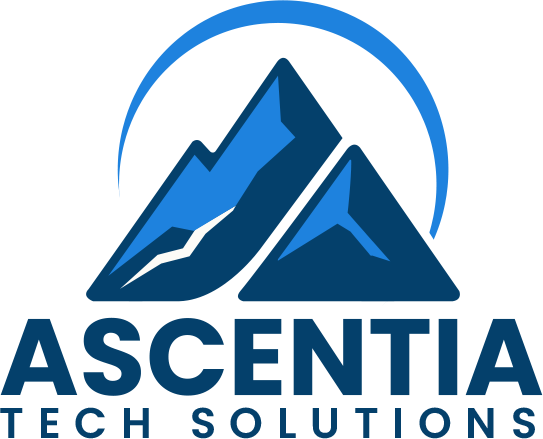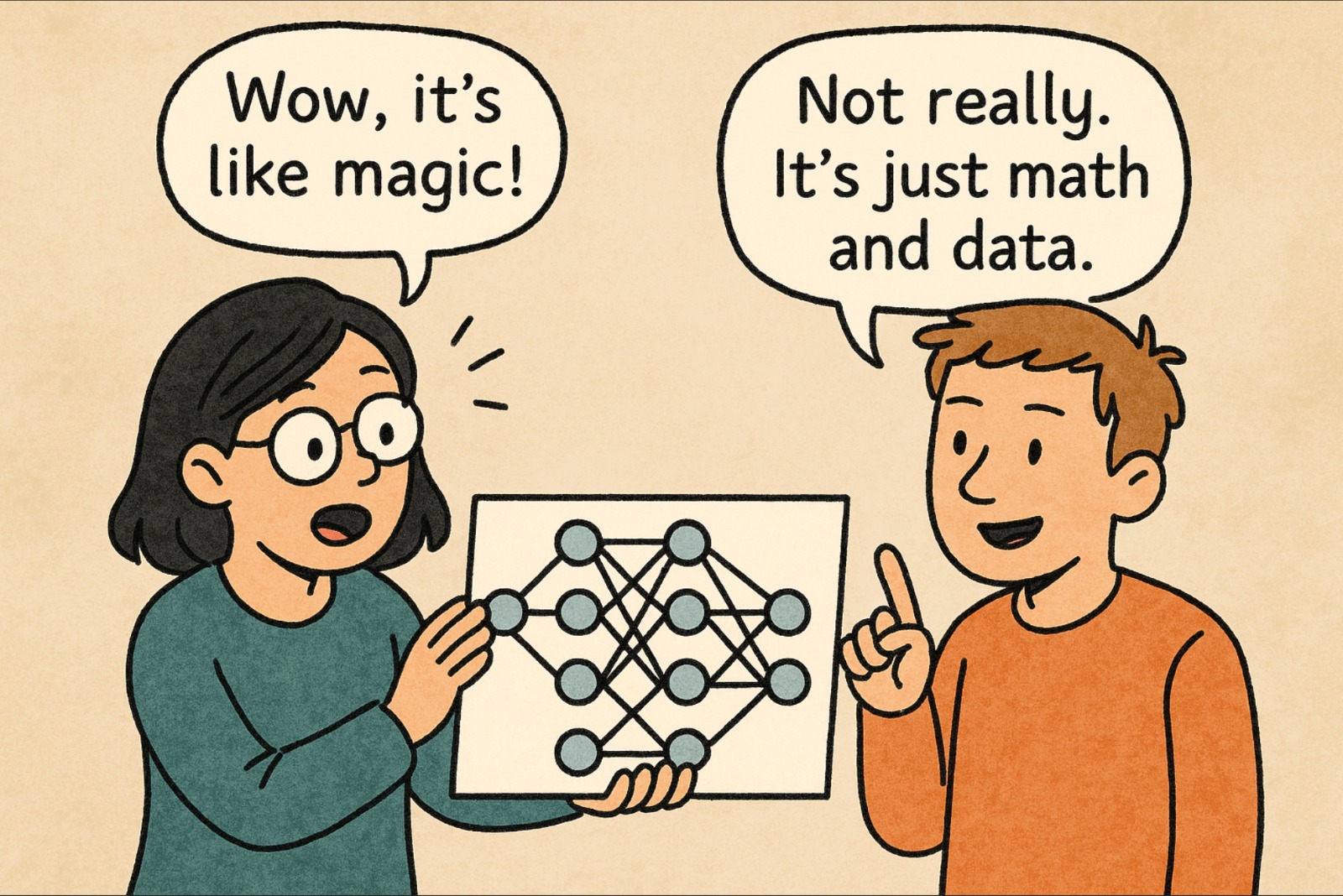Let’s Clear the Air
When people hear “Artificial Intelligence,” they often think of robots taking over the world or machines that somehow “just know everything.”
But the truth? AI isn’t magic.
It’s math, data, and a whole lot of human creativity and engineering.
What This Post Is About
This post will help you understand the real deal behind AI, machine learning, and deep learning — without drowning you in jargon.
Whether you’re running a small business or leading a ministry, understanding how AI actually works can help you see where it fits into your world (and where it doesn’t).
The Breakdown
What’s the problem?
Many people either overhype AI or misunderstand it altogether.
Some think it can do everything. Others think it’s too technical to ever understand.
The reality is somewhere in between.
We believe everyone should know enough to make smart decisions — especially when it comes to growing your organization with AI.
So, what is AI?
At its core, Artificial Intelligence (AI) is about making machines that can learn from data and make decisions — without us writing step-by-step instructions for every situation.
That’s it.
It’s not guessing. It’s not magic.
It’s a system trained on real examples that learns patterns and makes predictions.
AI today mainly includes two big ideas:
- Machine Learning (ML) – learning from data
- Deep Learning (DL) – learning deeper patterns with layered networks
Let’s look at both.
Machine Learning: When Computers Learn Like Humans Do
Machine Learning is like teaching by example.
Instead of telling a program exactly what to do in every situation, you show it a bunch of examples — and it figures out the rules.
Here’s a real-world analogy:
Imagine you’re teaching a child to recognize a dog.
You don’t give them a checklist of “has fur,” “four legs,” etc.
You just show them lots of dogs — and their brain does the rest.
That’s what Machine Learning does with data.
Why it’s useful:
- 💡 It handles complexity we can’t easily write rules for (like spam emails or fraud detection).
- 🧠 It adapts as new data comes in.
- 🔍 It finds patterns and insights in huge datasets — even the ones we might miss.
Deep Learning: Going One Layer Deeper
Now, Deep Learning is a special type of Machine Learning that’s modeled after the human brain. It uses neural networks — layers and layers of connected “neurons” — to recognize more complex patterns.
Think of it like this:
- 📥 The first layer sees raw stuff (like pixels in an image)
- 📊 The middle layers pick out patterns (like edges, shapes, textures)
- 🎯 The final layer makes a decision (like “yep, that’s a cat”)
Why Deep Learning is powerful:
- 🖼️ It’s amazing at image tasks (think facial recognition, photo filters, self-driving cars)
- 🗣️ It powers language tools like Google Translate, chatbots, and autocomplete
- 🚀 It’s what fuels most of today’s AI breakthroughs — including large language models like ChatGPT
What Makes AI “Intelligent”? (Spoiler: It’s Just Really Good Engineering)
Here’s what’s really behind the curtain:
- Data is King. AI models learn from data — lots of it. If the data is biased or messy, the AI learns bad habits.
- Math is the Engine. Techniques like gradient descent help the models learn by reducing their mistakes, step by step.
- Tuning Matters. Developers tweak the model’s structure, learning rate, and even “turn off” random parts during training to avoid overfitting (where it memorizes instead of generalizing).
- There’s Still a Human in the Loop. From picking the right questions to maintaining the system after deployment — AI is a team sport.
What Surprised Us Most
People often think AI “understands” things.
But it doesn’t.
It recognizes patterns. It makes predictions. But it doesn’t know what a dog is — it just knows which pixels usually show up when someone labels something “dog.”
That’s why responsible use matters. We need humans to guide, question, and interpret what AI is doing — especially in sensitive fields like healthcare, finance, or ministry.
🙌 Wrap Up
AI isn’t science fiction. And it’s not just for tech giants.
It’s a tool — a powerful one — that can help small teams do more, reach farther, and work smarter.
But only if we understand it enough to use it wisely.
So next time you hear someone say, “AI can do anything,”
you’ll know: it can do a lot — but it learns like we do… one example at a time.
👉 Want to Learn More?
We’re helping ministries and businesses build human-centered AI solutions — the kind that solve real problems without overcomplicating life.
Subscribe to our newsletter or reach out for a free AI consult with our team at Ascentia Tech Solutions.
We’ll help you make sense of it all — simply, ethically, and impactfully.

